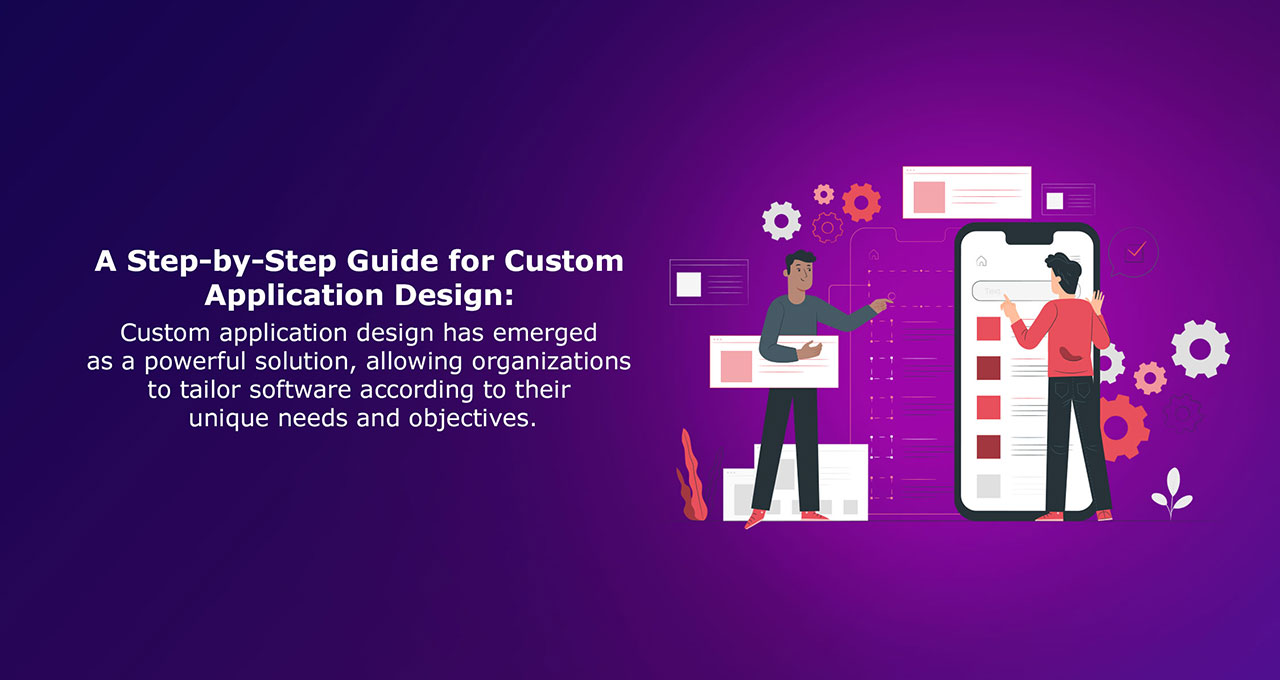
Image Credit: Image by storyset on Freepik
In today’s digitally-driven world, businesses are constantly seeking innovative ways to streamline processes, enhance user experiences, and stay ahead of the competition. Custom application design has emerged as a powerful solution, allowing organizations to tailor software according to their unique needs and objectives. However, embarking on a custom application development journey can be daunting without a clear roadmap. In this guide, we’ll navigate the step-by-step process of custom application design, from concept to completion, ensuring a smooth and successful development journey.
Development:
With the design approved, developers begin coding the application. This phase involves writing clean, efficient code while adhering to best practices and industry standards. Regular testing is conducted to identify and fix bugs promptly.
Integration and Testing:
As development progresses, different components of the application are integrated and tested for functionality, performance, and security. Rigorous testing ensures that the application meets quality standards and user expectations.
Deployment:
Once the application passes all tests, it’s ready for deployment. This involves deploying the application to the production environment and configuring servers, databases, and other resources.
Training and Documentation:
Before launching the application, end-users and administrators undergo training to familiarize themselves with its features and functionalities. Comprehensive documentation is provided for reference.
Launch and Post-Launch Support:
The application is officially launched, and post-launch support begins. This includes monitoring performance, addressing user feedback, and implementing updates and enhancements as needed.
Maintenance and Optimization:
Custom applications require ongoing maintenance to ensure smooth operation and optimal performance. This involves regular updates, security patches, and performance optimization.
Evaluation and Feedback:
Periodic evaluation is essential to assess the application’s effectiveness in meeting business objectives. Soliciting feedback from users and stakeholders helps identify areas for improvement and future enhancements.
Iterative Development:
The custom application design process is iterative, with continuous improvement being a key principle. Feedback and insights gathered during the evaluation phase inform subsequent iterations, ensuring that the application evolves to meet changing needs.
Adaptation to Emerging Technologies:
Technology landscape evolves rapidly, and custom applications must adapt to stay relevant. Regularly assessing emerging technologies and trends allows organizations to incorporate new features and capabilities into their applications.
Data Security and Compliance:
Data security and compliance are paramount in custom application design. Implementing robust security measures and ensuring compliance with regulations safeguard sensitive information and build trust among users.
Scalability and Flexibility:
Custom applications should be scalable and flexible to accommodate future growth and changes in requirements. Designing with scalability in mind ensures that the application can handle increased workload and user base over time.
Cost Management:
Managing costs effectively is essential throughout the custom application design process. Detailed planning, prioritization of features, and efficient resource allocation help optimize costs without compromising quality.
Collaboration and Communication:
Effective collaboration and communication among team members, stakeholders, and third-party vendors are critical for the success of custom application development. Clear communication ensures that everyone is aligned with project goals and requirements.
Continuous Improvement:
The journey of custom application design doesn’t end with the launch of the application. Continuous improvement is key to staying ahead in a competitive landscape. Regularly gathering feedback, analyzing performance metrics, and implementing enhancements ensure that the application remains valuable and impactful. In conclusion, custom application design is a multifaceted journey that requires careful planning, execution, and continuous improvement. By following this step-by-step guide and incorporating the outlined keywords throughout the process, organizations can navigate the complexities of custom application development with confidence, ultimately delivering innovative solutions that drive business success.
At GoPhygital, we specialize in creating custom application designs that meet your specific requirements. Let us help you bring your idea to life. You can reach out to us here.
Frequently Asked Questions (FAQ) About Custom Application Design
Custom application design refers to the process of creating software applications tailored to meet specific needs and requirements of an organization. It involves designing, developing, and deploying applications from scratch, ensuring they address unique business challenges and objectives.
Custom application design allows businesses to have full control over the features, functionality, and user experience of their software. It enables organizations to streamline processes, improve productivity, and gain a competitive edge by addressing their specific requirements effectively.
Off-the-shelf solutions are pre-built software applications designed to cater to a wide range of users and industries. Custom application design, on the other hand, involves building software from the ground up, tailored precisely to the needs and preferences of a particular organization or user base.
The key steps in custom application design include understanding requirements, conceptualization and planning, design and prototyping, development, integration and testing, deployment, training and documentation, launch and post-launch support, maintenance and optimization, evaluation and feedback, iterative development, adaptation to emerging technologies, data security and compliance, scalability and flexibility, cost management, collaboration and communication, and continuous improvement.
The timeline for custom application design varies depending on factors such as project complexity, scope, and resource availability. Generally, custom application design projects can take anywhere from a few months to a year or more to complete, including development, testing, and deployment phases.
Some benefits of custom application design include enhanced flexibility and scalability, improved efficiency and productivity, tailored user experience, better integration with existing systems, increased security and compliance, and the ability to address specific business needs effectively.
To ensure the success of a custom application design project, it’s essential to start with a clear understanding of requirements, engage stakeholders throughout the process, prioritize features based on business impact, communicate effectively with the development team, conduct thorough testing, provide comprehensive training and documentation, and continuously gather feedback for future improvements.
Data security is a critical aspect of custom application design, especially for applications handling sensitive or confidential information. Implementing robust security measures, such as encryption, access controls, and regular security updates, helps protect data from unauthorized access, breaches, and cyber threats.
Yes, one of the advantages of custom application design is its scalability. Custom applications can be designed with scalability in mind, allowing them to accommodate growing user bases, increased data volumes, and evolving business needs. By incorporating scalable architecture and flexible design principles, custom applications can adapt to meet changing requirements over time.
Getting started with custom application design involves defining clear objectives, identifying key stakeholders, selecting a reliable development partner or team, and conducting a thorough analysis of requirements and existing systems. By outlining project goals, timelines, and budget considerations upfront, organizations can kickstart their custom application design journey effectively.

